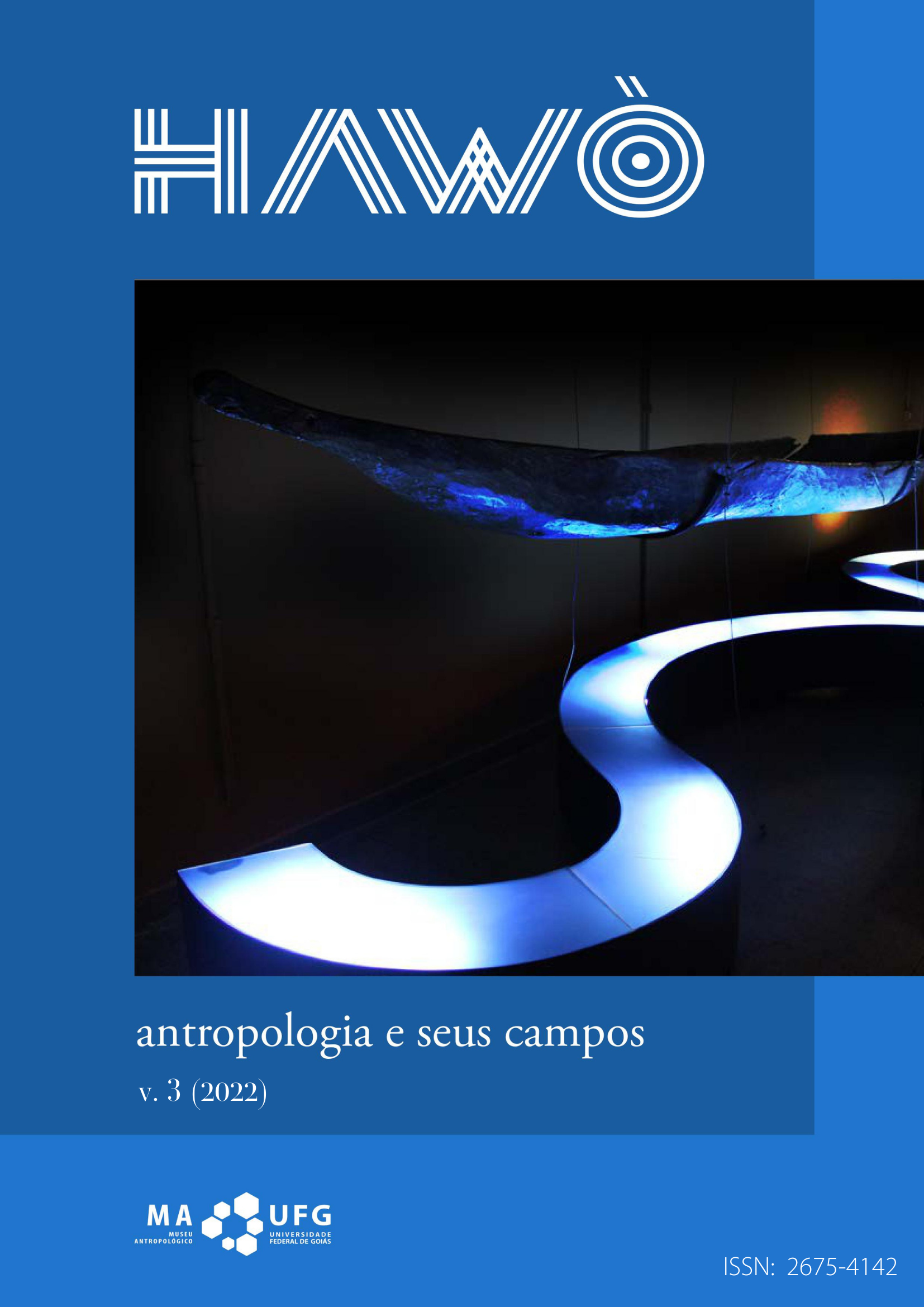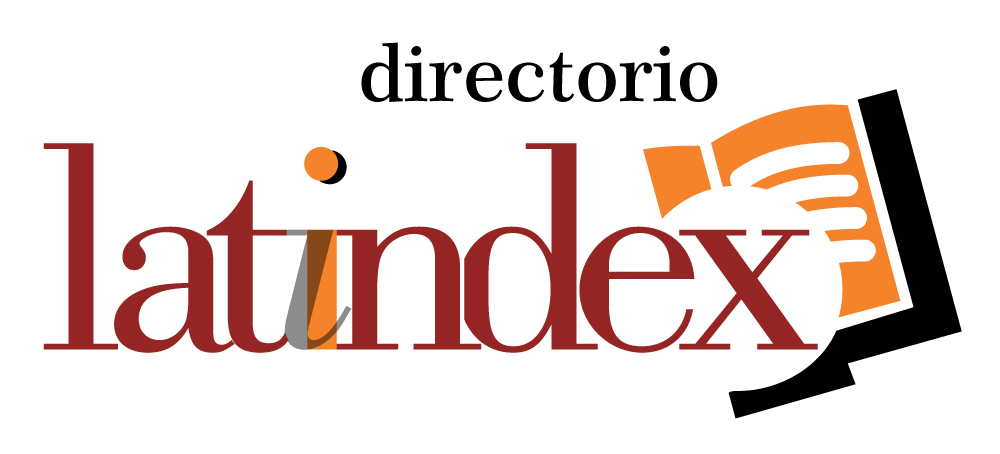The Umbanda and its things
a conversation about religion and material culture
DOI:
https://doi.org/10.5216/hawo.v3.71771Keywords:
Materiality, Religion, Umbanda, Artifacts, Material CultureAbstract
This essay aims to understand how material things manipulated in a religious context are perceived by its practitioners as essential elements for the expression and strengthening of the spiritual dimension. This apparent paradox – materiality as a condition for the expression and realization of immateriality – reveals a complete overlap between dimensions that have historically been treated as antagonistic and mutually exclusive. It is in contact with the materiality that human beings express their spirituality. It is through the material world that surrounds him that he will reflect on his existence, giving his own meaning to the things found in his experience.
References
CAVALCANTI, Maria Laura V. C. O mundo invisível: cosmologia, sistema ritual e noção de pessoa no espiritismo. Rio de Janeiro: Jorge Zahar, 1983.
CONTINS, Marcia. A circulação social e ritual de objetos materiais em contextos religiosos: as procissões do Divino Espírito Santo e de São Miguel Arcanjo no Rio de Janeiro. In: 27ª Reunião Brasileira de Antropologia. Anais da 27ª RBA. Belém: UFPA, 2010.
CHIESA, Gustavo R. Além do que se vê: magnetismos, ectoplasmas e paracirurgias. Porto Alegre: Multifoco, 2016.
GELL, Alfred. Arte e agência: uma teoria antropológica. São Paulo: Ubu Editora, 2018.
GOLDMAN, Marcio. Histórias, devires e fetiches das religiões afro-brasileiras. Análise Social, vol. XLIV (190). 2009.
HODDER, Ian; TEIXEIRA-BASTOS, Marcio; FERREIRA, Lucio. Isto não é um artigo: dialogando com Ian Hodder sobre a virada ontológica na Arqueologia. Revista de Arqueologia, v. 33, n. 2, p. 118-134, 2020.
INGOLD, Tim. The Perception of the Environment: essays on livelihood, dwelling and skill. London: Routledge, 2000.
INGOLD, Tim. Trazendo as coisas de volta à vida: emaranhados criativos num mundo de materiais. Horizontes Antropológicos, v. 18, n. 37, p. 25-44, 20212
LATOUR, Bruno. Jamais fomos modernos. São Paulo: Editora 34, 1994.
LATOUR, Bruno. Reflexão sobre o culto modernos dos deuses fe(i)tiches. Bauru: EDUSC, 2002.
LATOUR, Bruno. O que é iconoclash? Ou, há um mundo além das guerras de imagem?. Horizontes Antropológicos. Ano 14, n. 29. Porto Alegre, p. 111-150, 2008.
LÉVI-STRAUSS, Claude. O Pensamento Selvagem. Campinas: Papirus, 1997.
LÉVI-STRAUSS, Claude_. Antropologia Estrutural. São Paulo: Cosac Naify, 2008.
MAUSS, Marcel. Sociologia e Antropologia. São Paulo: Cosac Naify, 2003.
MAUSS, Marcel; HUBERT, Henri. Sobre o sacrifício. São Paulo: Cosac Naify, 2005.
MEYER, Birgit; GIUMBELLI, Emerson; RICKLI, João; TONIOL, Rodrigo. (Orgs.). Como as coisas importam: uma abordagem material da religião – textos de Birgit Meyer. Porto Alegre: Editora da UFRGS, 2019.
MILLER, Daniel. Materiality: an introduction. In: MILLER, Daniel (org). Materiality. Durham & London: Duke University Press, 2005.
ORTIZ, Renato. A morte branca do feiticeiro negro. São Paulo: Brasiliense, 1999.
RODRIGUES, Nina. O animismo fetichista dos negros baianos. Rio de Janeiro: Ed. UFRJ, 2006.
TAUSSIG, Michael. Defacement: public secrecy and the labor of the negative. Stanford: Stanford University Press, 1999.
Downloads
Published
How to Cite
Issue
Section
License
Copyright (c) 2022 Gustavo Ruiz Chiesa

This work is licensed under a Creative Commons Attribution 4.0 International License.
Os(as) autor(es/as) que publicam na Revista Hawò são os responsáveis pelo conteúdo dos artigos assinados e detém os direitos autorais. Concedem à revista, o direito de primeira publicação com o trabalho simultaneamente licenciado sob a Licença Creative Commons Atribuição-Não Comercial (Open Archives Iniciative - OAI). Esse recurso, utilizado para periódicos de acesso aberto, permite o compartilhamento do trabalho para fins não comerciais com reconhecimento da autoria. Caso o texto venha a ser publicado posteriormente em outro veículo, o autor deverá informar que o mesmo foi originalmente publicado como artigo na revista Hawò. Assim sendo, ainda que a revista seja detentora da primeira publicação, é reservado aos autores o direito de publicar seus trabalhos em repositórios institucionais ou em suas páginas pessoais, mesmo que o processo editorial não tenha sido finalizado.
É reservado à revista, o direito de realizar alterações de ordem normativa, ortográfica e gramatical visando manter o padrão de língua, respeitando-se, porém, o estilo dos autores.







